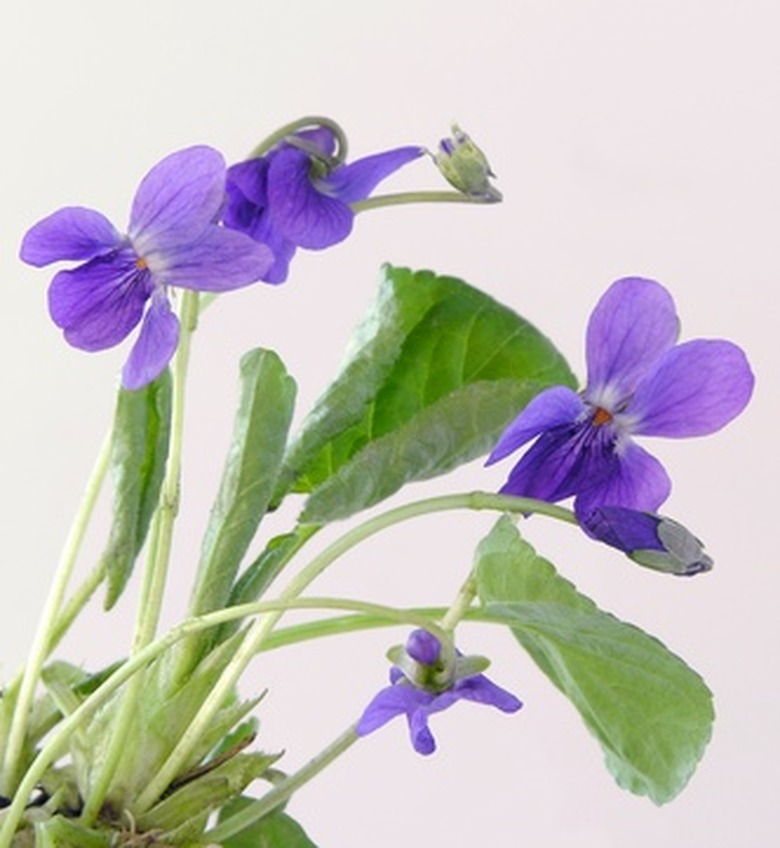Illinois Plant Identification
Illinois is a land of diverse woodlands, prairies and wetlands. There are hundreds of species of plants here, ranging from aquatic plants to pines to grasses and wildflowers. There are a number of resources, both online and in print, to help you figure out the species of plants that you'll encounter. Be sure to bring along a camera, pens and paper for notes or drawings, and a field guide to make identification faster, easier and more precise.
Collecting Samples
National parks, state parks and historical areas often have laws protecting endangered plants, and restrictions on how to collect samples. Pick up a guide from the park manager before collecting samples for identification. When you collect a sample, be sure to collect leaf, stem, flower, fruit, nut or seed specimens if they exist. The wider the range of details, the more accurate your identification is likely to be.
- Illinois is a land of diverse woodlands, prairies and wetlands.
- There are a number of resources, both online and in print, to help you figure out the species of plants that you'll encounter.
Photographing and Note-Taking
It's far less injurious to plants (especially endangered or finicky plants) to take detailed photographs. You can also photograph the surrounding area. Details like slope of the ground, terrain type and nearby water sources can give you additional clues. Take notes on whether it was found in a prairie, on an incline leading to a waterway, or was in the waterway itself (such as a water weed in Lake Michigan or a tree on the bank of the Mississippi).
Field Guides
General field guides for plants native to the United States are often helpful, but it's easier to find a guide that caters to a specific location or type of plant. Robert H. Mohlenbrock's field guide, Vascular Flora of Illinois, offers a broad range of species found in the state. Specialized guides are available for specific types of places or plants such as prairies, wildflowers, edible plants or trees.
- It's far less injurious to plants (especially endangered or finicky plants) to take detailed photographs.
- General field guides for plants native to the United States are often helpful, but It's easier to find a guide that caters to a specific location or type of plant.
Online Plant Searches
The University of Illinois offers a search engine for woody plants that grow in the Illinois region (woodyplants.nres.uiuc.edu/plant/search/), where you can enter information about a plant's habitat, plant parts or even seasonal color. There are color photographs and descriptions for confirmation. The university also offers a weed identification search engine (weedid.aces.uiuc.edu/index.html) where you can input a large variety of fields, then click on specific names of plants once you've narrowed your search. Plant descriptions open in a new window, with photos of the juvenile and adult plant and flowers.
Other Online Resources
If you already suspect the species of the plant you've found, you can verify it online with the Illinois Native Plant Guide (il.nrcs.usda.gov/technical/plants/npg/index.html). The site is hosted by the National Resources Conservation Service of the US Department of Agriculture. Selecting a plant's common name will open up a page with details of the plant and illustrations for verification.
- The University of Illinois offers a search engine for woody plants that grow in the Illinois region (woodyplants.nres.uiuc.edu/plant/search/), where you can enter information about a plant's habitat, plant parts or even seasonal color.
References
- "Vascular flora of Illinois"; Robert H. Mohlenbrock; 2002
- University of Illinois at Urbana-Champaign: UI Plants: Woody Ornamentals
- University of Illinois at Urbana-Champaign: Weed Identification
- USDA Natural Resources Conservation Service: Illinois Native Plant Guide (NPG)
